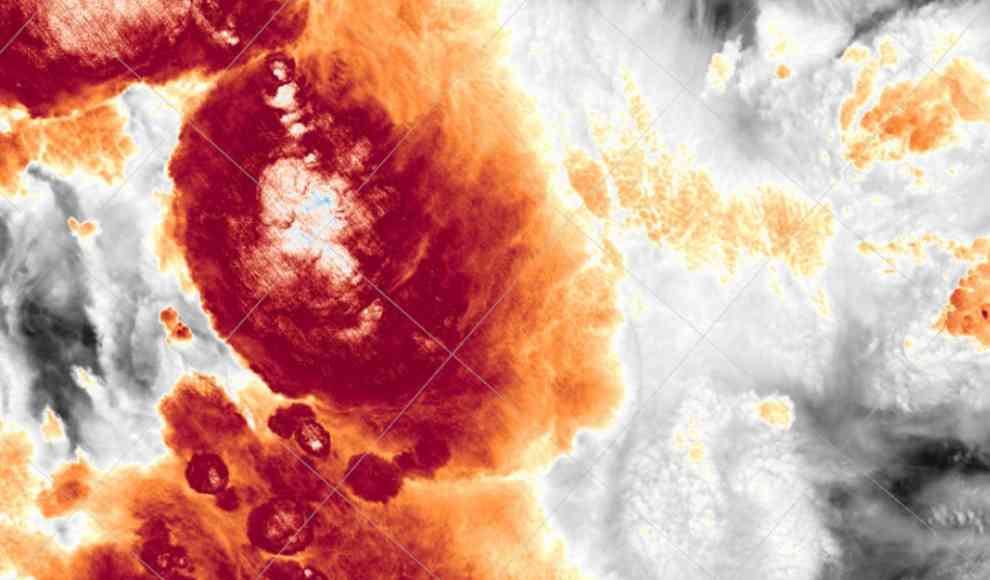A new record for cold temperatures has been set due to an unusually cold tropopause in a thunderstorm. Scientists from the National Centre for Earth Observation in Oxford and the University of Wisconsin have reported in the Geophysical Research Letters about a new record for cold temperatures. On December 29, 2018, a temperature of -111.2 degrees Celsius was measured in a thundercloud over the southwest Pacific. The cloud was more than 30 degrees colder than normal high-rising thunderclouds. Typically, extremely low temperatures only occur on the top of tropical cyclones. However, the new record was measured during a normal thunderstorm. According to Simon Richard Proud and Scott Bachmeier, this was a special case that occurred because the thundercloud penetrated a particularly cold atmospheric layer.
The scientific community is investigating such temperature records mainly because very cold cloud tops are an indicator of very strong and dangerous storms. Therefore, the temperature is one of the most important factors in the evaluation model for storms, whose data is used by early warning systems, among others. In most storms, warm, moist air rises from the lower atmosphere, and its moisture then condenses, further heating the air. This process leads to further acceleration of the rising air. Normally, an equilibrium level is reached in the tropopause, the air layer at the upper edge of the troposphere, where the acceleration decreases. However, in storms with particularly high levels of heat and moisture, and therefore also particularly high levels of energy, so-called “overshoots” can occur. The air masses then reach into the lower stratosphere instead of the tropopause. The temperature decreases by about seven degrees Celsius per kilometer. The temperature of such “overshoot domes” is measured by satellites. In the case of the newly measured cold record, an unusually cold tropopause was responsible for the particularly low temperature, rather than an overshoot. Therefore, despite the temperature, the intensity of the storm was significantly lower than that of Typhoon Kammuri in 2019, where a temperature of -109.4 degrees Celsius was measured.
This new record for cold temperatures is significant because it highlights the importance of understanding the relationship between temperature and storm intensity. The scientific community will continue to investigate such temperature records to better understand the behavior of storms and improve early warning systems.









